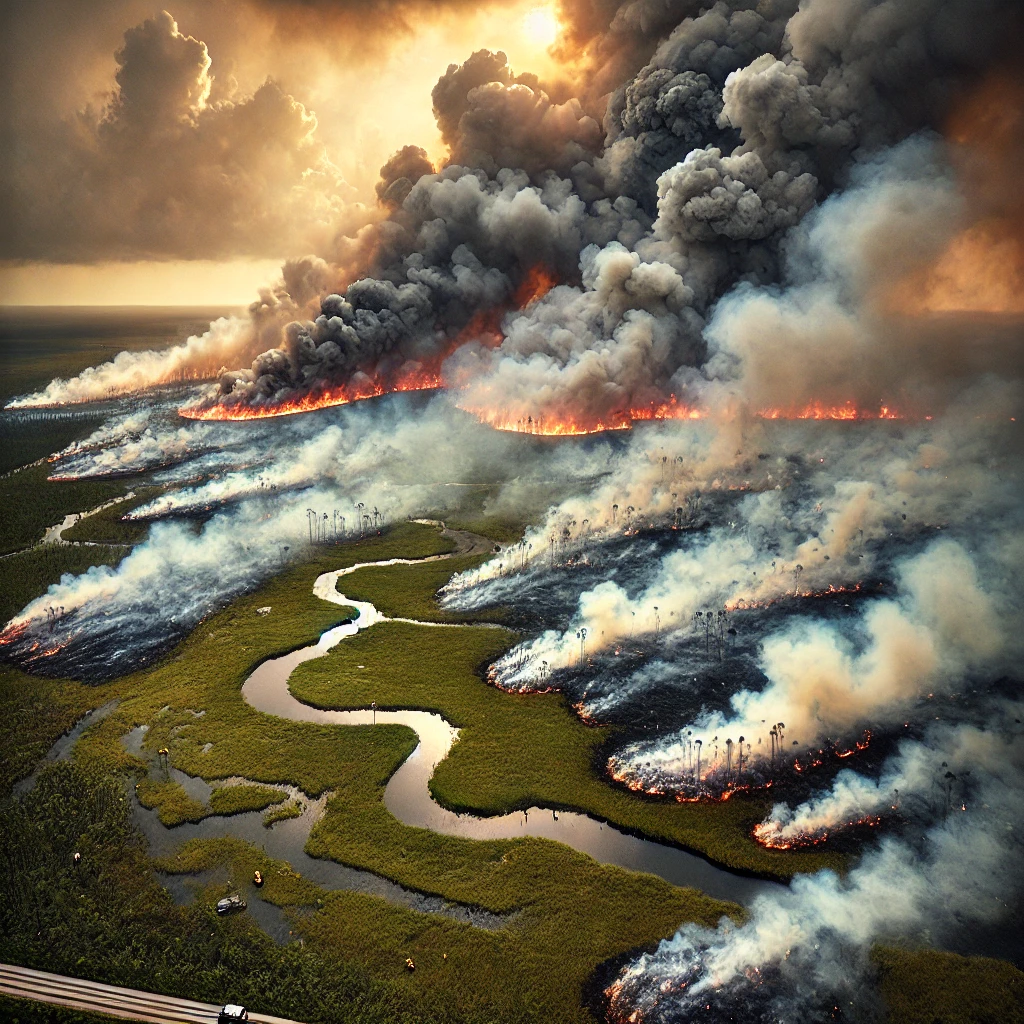Physical Address
304 North Cardinal St.
Dorchester Center, MA 02124
Physical Address
304 North Cardinal St.
Dorchester Center, MA 02124

The Johnson Fire in Everglades National Park has burned 1,900 acres with 0% containment as of March 19, 2025. Learn about the fire’s impact on wildlife, ecosystem recovery, fire management efforts, and Florida wildfire risks. Stay updated on Everglades National Park fire news, containment strategies, and what visitors should know.
Wildfires are a natural part of Florida’s ecosystem, but when a fire grows beyond control, it can pose serious threats to wildlife, infrastructure, and visitor safety. The Johnson Fire, a wildfire currently raging through Everglades National Park, has become a major concern for conservationists, firefighters, and travelers.
As of March 19, 2025, the Johnson Fire has burned approximately 1,900 acres and remains 0% contained, meaning the fire is actively spreading with no established perimeter to halt its expansion. Located thirteen miles southwest of Florida City, FL, near Mahogany Hammock and Main Park Road, the fire has already caused road closures and is being closely monitored by fire management teams.
While fire plays an essential role in the fire-adapted ecosystem of the Everglades, the scale and intensity of the Johnson Fire bring significant risks to the region. Let’s explore the causes, containment efforts, environmental impact, and long-term implications of this wildfire.
The Johnson Fire is burning in the heart of Everglades National Park, a vast and ecologically rich area in southern Florida. The fire is located:
As of March 19, 2025, the Johnson Fire has spread across 1,900 acres. The lack of containment suggests the fire continues to expand unchecked, posing an ongoing challenge for fire suppression teams.
The exact cause of the Johnson Fire remains under investigation. The Everglades frequently experience wildfires, with many ignited by lightning strikes, which are common in Florida’s subtropical climate. However, human-related factors such as campfires, vehicle sparks, or accidental ignitions can also play a role in starting fires.
Unlike many other landscapes where wildfires are purely destructive, the Everglades National Park is uniquely adapted to fire. Fire helps:
While controlled burns (prescribed fires) are essential for maintaining the Everglades, uncontrolled wildfires like the Johnson Fire pose unique risks. These risks include:
As of the latest reports, the Johnson Fire remains at 0% containment, meaning no fire breaks or suppression perimeters have successfully halted its spread.
Fire crews are actively working to suppress the fire using various tactics:
Containing a wildfire in the Everglades presents unique challenges:
The fire is burning through native plant communities, including sawgrass marshes, pine forests, and hardwood hammocks. While many species have evolved to survive fire, intense wildfires can destroy habitats, forcing animals to relocate.
Some species affected may include:
Due to safety concerns, Mahogany Hammock Road is closed. Additional closures may follow if the fire continues to spread near Main Park Road, which is a major access route for visitors.
The Johnson Fire is not the only wildfire currently burning in Florida. Two other major fires are also being monitored:
| Fire Name | Location | Size | Containment |
|---|---|---|---|
| Johnson Fire | Everglades National Park | 1,900 acres | 0% |
| Fire 344 | 7 miles east of Florida City, FL | 3,600 acres | 20% |
| Patrick Fire | Merritt Island National Wildlife Refuge | 460 acres | 50% |
The Johnson Fire’s size and lack of containment make it one of the most significant active wildfires in Florida.
If left unchecked, the fire could lead to:
However, if properly managed, fire can lead to stronger ecosystems, promoting new plant growth and preventing overgrowth.
Firefighters are actively working to contain the blaze, but progress will depend on weather conditions and suppression efforts.
Visitors should check official National Park Service updates before traveling, as additional closures and air quality concerns may arise.
The Johnson Fire in Everglades National Park is a reminder of the power of fire in Florida’s ecosystem. While fire plays a natural role in maintaining the park’s health, uncontrolled wildfires can present serious challenges.
With 1,900 acres burned and 0% containment as of March 19, 2025, this wildfire continues to impact the region.
Key Takeaways:
As containment efforts continue, the Everglades will once again demonstrate its resilience in the face of fire.
For the latest updates, visit National Park Service – Everglades Fire News.